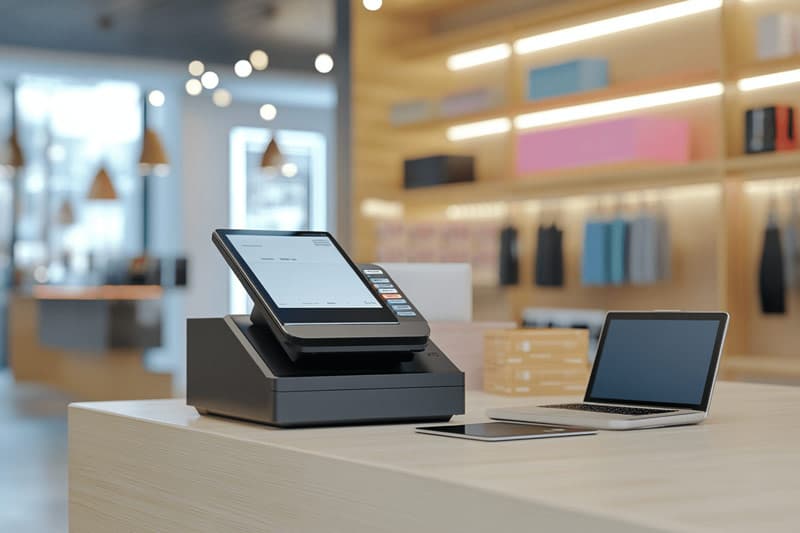When it comes to credit card processing, high-risk merchants have additional costs, higher regulatory expectations, and more oversight from processors. Yet, as interchange rates and risk premiums eat into margins, business owners seek legal and strategic ways to recover those fees. That’s where dual pricing comes into play. If you’ve been wondering what is dual pricing credit card processing, it’s the solution that permits merchants to charge two different prices—cash and credit—without being in violation of card brand regulations. Those that stand to benefit the most from this type of payment processing are high-risk businesses in CBD, adult services, supplements, etc. This post will discuss how dual pricing works, how it’s different from surcharging, and where it factors into high-risk compliant payment processing solutions.
How Dual Pricing Works in Credit Card Processing
Essentially, how dual pricing works in credit card processing is that it gives you the opportunity to display two different prices to customers: one for card payment, one for cash payment. The difference is that the credit price includes the processing fee and the cash price does not. Instead of tacking on fees at the end, which may be in violation of network regulations or local laws, dual pricing creates a situation where the price paid by credit is the merchant accounting for the fee upfront. For example, if a product costs $10, it may cost $9.70 for a cash transaction and $10 for a credit transaction. This way, the customer has a choice and avoids conflict with regulating agencies and the merchant, it also presents a way for the merchant to legally recoup fees. For high-risk businesses with much higher processing fees, this can save a merchant a significant amount without risking credit-paying clients.
The Legal Distinctions Between Dual Pricing and Surcharging
For high-risk merchants who mistake dual pricing for surcharging, the legality and card brand rules are vastly different. A surcharge is a fee affixed to a posted price at the sale. This means that when a customer checks out, the surcharge is added onto the total. This creates compliance requirements, inherently. For example, surcharging requirements for Visa and Mastercard apply to disclosure signage, network registration and cap percentage fees[1][2]. In contrast, dual pricing presents the fees up front, which means there’s no fee added to the total at checkout. Therefore, legal pricing is permissible in more states, and more favorably accepted by card brands because it’s transparent prior to purchase. For high-risk merchants who have transactions in multiple states, dual pricing poses less risk for challenges, chargebacks, penalties and even termination of the merchant account.
Why High-Risk Merchants Should Consider Dual Pricing
Merchants in high-risk industries already pay processing rates far above the normal Merchant sometimes facing rolling reserves, monthly account reviews or unexpected underwriting. Therefore, dual pricing helps save those margins by passing on costs to customers paying via card while offering cash customers a nominal discount. This is beneficial for industries with high average ticket, low margins and a dedicated customer base. In addition, utilizing dual pricing creates another transparent layer for the operation, reducing customer complaints from having to pay a credit card fee. It also helps merchants balance their mix of preferred payment types as it encourages cash use for situations where credit/debit card fee transactions are highly impractical.
Setting Up a Dual Pricing Program Correctly
For dual pricing when it comes to potentially high-risk merchants, one needs to have a relationship with an in-house processing provider or gateway that offers the functionality. Not every pos or processor offers true dual pricing functionality. Compliance is having the signage appropriately displayed, the receipt more notated and the terminals configured in such a way that the lower price always goes through automatically upon selection, no manual override should be allowed as it can confuse personnel and pricing practices. Thus using a processor who does dual pricing allows for proper configuration on the up and up and in the back end. For ecommerce, it may mean showing both prices ahead of time before checkout, allowing for shopping cart logic to dictate the eventual pricing based upon payment selection.
Addressing Customer Perceptions and Compliance Risks
Anytime a merchant associates price change with a payment method, it’s important to communicate with the customer. Most customers know that cash may go lower than credit card price, but some merchants might think it’s a hidden fee to use a credit card. For high-risk merchants, it’s even more essential to have the staff trained to disclose what’s happening, as well as all receipt information and signage, to ensure that people know why it’s priced that way. Furthermore, merchants need to look into their own state regulations to make sure they’re compliant. Some states will not allow any type of price change, others will allow it but will restrict how[3]. Merchants caught doing it incorrectly could face losing their standing merchant account, face fines, or even termination from their processors. Thus it’s important to be above board with credit card branding and legalities, especially if one’s already flagged as high-risk.
Financial Impacts of Dual Pricing for High-Risk Businesses
The cost recovery from dual pricing is incredible when done right. For high-risk merchants already spending 3% or more effective processing fees, transferring this fee to the consumer saves merchants thousands each year that would go to fraud prevention techniques, marketing increases and larger stock. In addition, the increased level of cash transactions creates cash flow with dual pricing by avoiding processor reserve holds and decreased disputes due to exaggerated fees[4]. Merchants also have blended effective rate control, giving them better predictability for cost which improves overall net margin predictability.

Operational Benefits of Dual Pricing
Reduced Processing Overhead
Merchants in domestic verticals where ticket price is already high will eliminate some of the high interchange and processor markup fees that plague other merchants if dual pricing is established. This means better fiscal stability and lower exposure over time due to processor fluctuations.
Increased Payment Flexibility
This allows consumers to pay how they want but fully understand the potential final price. This decreases disputes as well when a consumer is in a face-to-face situation at check-out and presented with price options.
Lower Chargeback Volume
By offering a cash incentive and reducing card exposure, dual pricing may indirectly reduce the frequency of card-related chargebacks. This is particularly valuable in industries like adult services, supplements, or digital goods where chargebacks are common.
Simplified Tax Reporting
Since cash and card totals are tracked by sale (since they're processed separately), dual pricing makes it easier to track payment types for sales tax reporting and reconciliation. This advantage reigns supreme with higher volumes and additional jurisdictions.
Improved Margins in High-Ticket Sales
High-risk merchants who have expensive items are able to retain pricing as they keep their credit card transaction margins but utilize cash price as an instant discount. This lessens profit reduction because of processor fees.
Stronger Merchant-Processor Relationships
Those processors that allow dual pricing typically work more with high-risk merchants and offer better dispute tools, integrations and reporting. This processor will onboard you faster and limit freezing your accounts as you grow.
FAQ
Q: What is dual pricing credit card processing?
A: Dual pricing credit card processing means a merchant displays two prices, cash and credit. The credit price is inclusive of the processing fees, thus giving customers transparency while offering the business a better opportunity for cost recovery.
Q: Is dual pricing the same as surcharging?
A: No. Surcharging is assessed at checkout. Dual pricing charge is displayed prior to payment. Dual pricing is legal in more states and favored by card brands, provided compliance is properly followed.
Q: Can high-risk merchants use dual pricing?
A: Yes. High-risk merchants benefit the most from dual pricing since their processing fees are generally higher. Dual pricing is an approved and compliant means of reducing fees without being against card network rules[5].
Q: Do all processors support dual pricing?
A: No. You must have a processor or POS system that specifically states they accept dual pricing. Otherwise, they may consider it surcharging and if not set up properly, put you at risk for non-compliance.
Q: Does dual pricing affect customer satisfaction?
A: Most customers don’t mind dual pricing when it’s presented to them. Many customers enjoy having a cash discount when paying in cash, and as long as there’s proper signage and transparency, the transaction’s integrity should remain intact.
Q: Is dual pricing legal in every state?
A: No. Dual pricing is legal in many states; however, there are several states with restrictions or bans. It’s best to check ahead of time and make sure your pay processor knows how to implement compliance from day one.
Final Thoughts
It’s tough for high-risk merchants to survive when high credit card processing fees can constantly eat into revenue. Dual pricing is a tactical and compliant method for businesses to recoup such costs without turning away customers or raising red flags with a processor that would otherwise respond with penalty fees. Understanding what dual pricing credit card processing is can help save your business’ bottom line. Payment Nerds specializes in getting high-risk clients set up with the best dual pricing solutions for compliance, customer understanding, and future savings as your business expands. If you’re already raising eyebrows with your processing options, dual pricing might be the safe solution that keeps you competitive in 2025 and beyond.
Sources
- Visa. “Surcharging and Dual Pricing Guidelines.” Accessed July 2025.
- Mastercard. “Dual Pricing Rules for U.S. Merchants.” Accessed July 2025.
- Federal Trade Commission. “Credit Card Fee Transparency.” Accessed July 2025.
- NACS. “Legal Overview of Cash Discounting.” Accessed July 2025.
- National Retail Federation. “Card Processing Strategies for Small Businesses.” Accessed July 2025.











